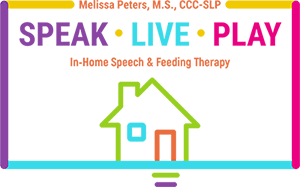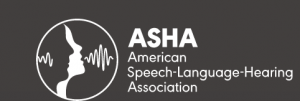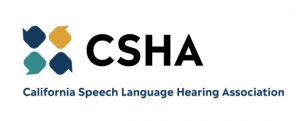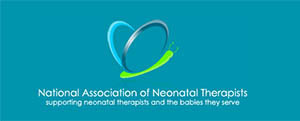Autism Spectrum Disorder
Autism is a multifaceted condition that profoundly impacts social interaction and communication abilities. It is a lifelong condition that can be noticed in children as they grow up. Autism affects more boys than girls, and signs usually show between the ages of 2 and 3.
Autism is a spectrum disorder, which means that it can vary in intensity and impact from person to person. While there is no cure for autism, early intervention and therapy can help improve social skills.
So, what is autism exactly? Autism Spectrum Disorder (ASD) is a neurological condition that impacts brain development, resulting in diverse effects on individuals. It can make it harder for people to interact and communicate with others. Some people with autism may also have repetitive behaviors or difficulty with non-verbal communication.
It’s important to understand that autism is not something to be afraid of or misunderstood. By learning more about autism and supporting those who have it, we can create a more inclusive and understanding world.
Remember, autism is a unique and diverse condition, and everyone deserves respect and acceptance. Let’s all work together to create a world where everyone feels valued and understood.
Symptoms of Autism Spectrum Disorder
Autism symptoms fall under three categories;
- Social communication impairment
- Language and other cognitive skills impairment
- Emotional and behavioral challenges
Autism disorder social communication impairment symptoms include deficits in social cognition, joint attention, and social cognition. The language and cognitive skills impairments include delayed acquisition of words, deficits in using and understanding verbal and non-verbal communication, symbolic deficits, and literacy deficits.
Behavioral and emotional deficits include challenges in self-management, dealing with a change in routine, anxiety/social withdrawal, etc. There may also be certain feeding and sensory problems, including under-responsiveness and over-responsiveness, rejecting food in patterns based on food presentation and texture, and consuming a smaller variety of food than others.
Common Autism Challenges Patients Encounter
Social challenges
Children with autism, in most cases, fail to adapt to common social changes. For instance, they may fail to respond to other people’s names or even their names. Also, they may need more interest in people and prefer spending time alone. They are, therefore, more introverts, although this does not imply that anyone who is an introvert has autism. Suppose your child prefers staying indoors or shows no interest in engaging in social activities such as games with their peers. In that case, you need not assume that they have autism but seek the intervention of a therapist.
Communication Challenges
Apart from having complications with social skills, children with autism also encounter communication problems. They may either have a total complication or need to learn how to communicate faster. Although children always show signs of communication and interaction with people and objects by the age of 3, children with autism may, however, fail to show such signs. The common challenges may include Sentence construction and often repeating words. Your child may reply to a question with the same question or constantly repeat similar words they have heard.
Apart from speech, children with autism fail to comprehend how to tone their voice. Their speech is, in most cases, rigid, and one may need help understanding what they imply. Non-verbal communication is another area where children who have autism have complications. An example of such communication skills includes the use of gestures. One would expect, for instance, their partner to maintain eye contact when they are conversing to show that the partner is paying attention.
Also, you can signal things using your hands, and the other person will definitely try to figure out what it is that you are trying to imply. This case is, however, different for children who have an autism disorder. They need help understanding what it means when one uses gestures, and they may still need to respond. You may also observe that they do not maintain eye contact during communication – Something that the majority of people perceive as rudeness.
Treating Autism disorder
After an autism test confirms the diagnosis, speech therapy is the best treatment approach. It is the role of a speech-language pathologist. A speech-language pathologist helps in the following areas;
- Non-verbal communication
- Social skills
- Concept skills
- Conversation skills
- Grammar
- Prosody
- Speech pragmatics
- Body language
- Asking and answering questions
- Social skill
In conducting speech therapy, observe the following;
- Ensure your child can communicate functionally and spontaneously. Your child should communicate his needs without prompts.
- Instruct them on how to act in various social settings to understand what is socially acceptable in various settings.
- Directly instruct the child on peer interactions, including play skills, joint attention, and perspective-taking.
- Other adults need training and support to provide instruction to the child beyond the therapy minutes. It allows the child to transfer skills from one setting to another.
- Fine-tune communication skills after other areas improve. These include speech, sound, and grammar errors, difficulties with figurative language, and asking and answering questions.
The Therapy Process
Therapy for children who have autism is a very critical process. It ensures that the child learns some of the most important communication skills. Moreover, the process requires that the child is exposed to different environments. Parents or guardians can choose to take the initiative of taking the child through the therapy process alone but with the help of a professional therapist or choose to let the therapist handle the situation. Parental care is significant during this phase, and the parent or guardian will have to take part in the education process once in a while.
The Aim Of The Process
The primary aim of the therapy process is to ensure that the child acknowledges the social environment and becomes aware of him or herself. By becoming aware of themselves, children will then start recognizing the common things and learn how to communicate. Therapy also focuses on making the children understand emotions and how to react to different situations. Lastly, the therapy will aim at helping the child take part in conversations and construct more sensible sentences. When teaching the child how to communicate, the primary target should be their peers and how the child would relate to them in a particular situation.
What Could You Do?
Depending on the aim of the therapy, it can take different dimensions. The therapist may use things that make the child want to communicate. An example would be taking something that the child uses and placing it out of reach. The child will then want to find a reason to want to communicate. The parent, guardian, or therapist can also use expressions to communicate with the child. You can point where something is, and with time, the child will master what a particular gesture means. Rewarding a child for doing something is also an excellent way of helping the child learn.
Conclusion
Paying attention to the development process of children is essential. A parent or guardian should be able to notice an abnormal behavior in their child. Seeking earlier assistance may help the child to adapt fast to the environment. Why not spend time with your child, understand him, and help prevent the intensive therapy sessions when the child is fully grown?
If you need professionals to help you with your son’s/daughter’s Autism Spectrum Disorder, you can always reach out to Speak Live Play. Book a session with one of our very own speech therapists today!
Sources:



